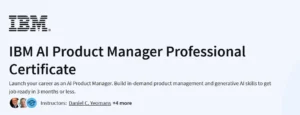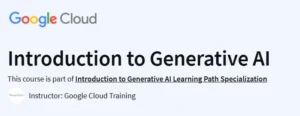What will you learn in IoT Certification Training on Azure Course
Grasp the IoT ecosystem: architecture, frameworks, and solution design on Azure
Configure and program Raspberry Pi and Sense HAT: GPIO interfacing, sensor data collection, and Python scripting
Build end-to-end IoT solutions with Azure IoT Hub: device provisioning, telemetry ingestion, and message routing
Implement edge computing with Azure IoT Edge: deploy modules to Raspberry Pi, perform local analytics, and manage containerized workloads
Program Overview
Module 1: Introduction to Internet of Things
⏳ 2 hours
Topics: IoT fundamentals, ecosystem components, decision frameworks, and solution-architecture models
Hands-on: Explore major IoT boards and diagram a reference architecture
Module 2: Setting Up Raspberry Pi & Sense HAT
⏳ 2 hours
Topics: Raspberry Pi installation, SSH access, Sense HAT programming basics
Hands-on: Configure Pi over SSH and program Sense HAT sensors with Python
Module 3: Building IoT Solutions with Raspberry Pi
⏳ 3 hours
Topics: Sensor-actuator integration, data streaming to Google Sheets, basic OpenCV for vision tasks
Hands-on: Create a weather station, log data to Google Sheets, and build a face-detection app
Module 4: IoT Communication Protocols
⏳ 1.5 hours
Topics: MQTT, HTTP, AMQP, CoAP—protocol selection and implementation
Hands-on: Publish and subscribe to sensor data over MQTT
Module 5: Implementing IoT with Azure IoT Hub
⏳ 3 hours
Topics: Device registration, telemetry ingestion, routing to storage, and dashboarding
Hands-on: Register Pi devices, send/receive messages via Azure IoT Hub, visualize data in Azure Storage Explorer
Module 6: Edge Computing & Analytics
⏳ 2 hours
Topics: Azure IoT Edge architecture, module deployment, real-time analytics at the edge
Hands-on: Deploy IoT Edge modules to Raspberry Pi and analyze streaming sensor data locally
Module 7: Alexa Voice Bot Integration
⏳ 1.5 hours
Topics: AWS Alexa Skill development, Pi-Alexa communication, voice-driven IoT control
Hands-on: Build and deploy an Alexa skill to query sensor readings and control actuators on Pi
Module 8: Capstone Project – Real-World IoT Solution
⏳ 4 hours
Topics: End-to-end design, security considerations, scalability, and future enhancements
Hands-on: Architect and implement a complete IoT scenario combining cloud, edge, and voice interfaces
Get certificate
Job Outlook
IoT Developer: $100,000–$150,000/year — build and deploy IoT solutions across industries
Edge Solutions Engineer: $110,000–$160,000/year — implement edge analytics and containerized workloads
Cloud IoT Architect: $120,000–$180,000/year — design secure, scalable IoT architectures on Azure
Specification: IoT Certification Training on Azure
|
FAQs
- No prior .NET experience required; basic programming knowledge helpful.
- Learn C# syntax, types, control flow, and CLR fundamentals.
- Hands-on projects with Windows Forms and WPF for desktop apps.
- Covers ASP.NET Web Forms, MVC, and Web API for web apps.
- Builds a foundation for .NET developer or full-stack roles.
- Build CRUD desktop apps using Windows Forms.
- Create dashboards and real-time interfaces with WPF and XAML.
- Develop web apps with ASP.NET Web Forms and MVC.
- Expose data via RESTful Web API services.
- Integrate databases using ADO.NET and Entity Framework ORM.
- Implement authentication/authorization (Forms, Windows, OAuth).
- Configure apps via app.config and web.config.
- Use structured logging with Serilog/NLog.
- Deploy web apps on IIS and optimize memory usage.
- Learn async patterns for scalable application performance.
- Gain skills for .NET Developer or Full-Stack .NET roles.
- Build enterprise-grade desktop and web applications.
- Develop RESTful APIs and integrate with front-end frameworks.
- Hands-on projects for real-world experience.
- Salary potential: $80,000–$140,000/year depending on role.
- Connect to SQL Server using ADO.NET and Entity Framework.
- Perform CRUD operations and model databases.
- Build desktop apps with dynamic UI and event handling.
- Develop web apps with MVC routing, controllers, and Razor views.
- Expose data through Web API and test with Swagger.





